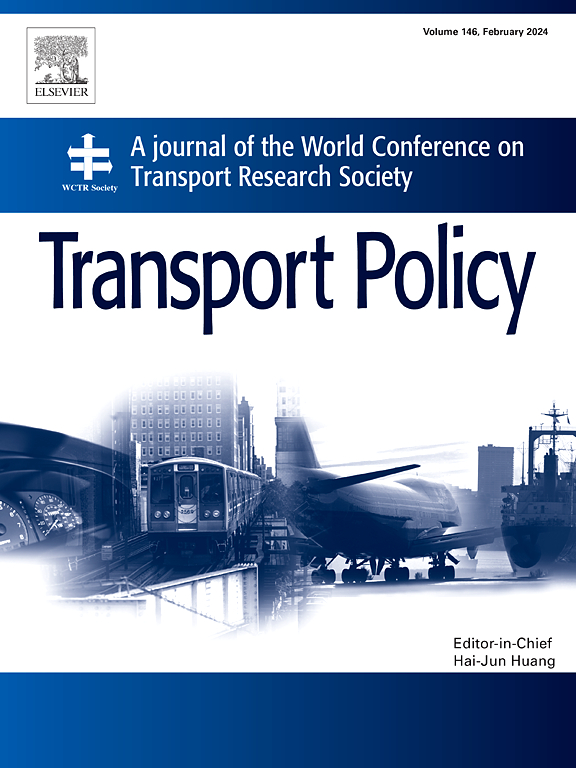Expanding the understanding of universal design beyond technical solutions and physical environment – 8 policy intervention areas
IF 6.3
2区 工程技术
Q1 ECONOMICS
引用次数: 0
Abstract
Mobility is essential for enabling people to work outside their homes and participate in a wide range of social activities. Moreover, the freedom of mobility—often taken for granted—is a crucial aspect of citizens' quality of life. Despite this, substantial portions of the population experience barriers that constrain their mobility. This paper demonstrates that adopting a holistic approach to universal design is more effective in reducing social exclusion for people with disabilities and making the public transport system accessible to as many people as possible. This is achieved by broadening the scope of user groups' needs and moving beyond universal design approaches that primarily focus on technical interventions and the physical environment. Based on a literature review of studies on universal design in transport systems, we identify a comprehensive set of barriers experienced by a wide range of user groups and the necessary interventions to mitigate these barriers. User groups include people with cognitive, intellectual, and psychosocial impairments, as well as those with respiratory conditions (asthma, allergies, COPD), gastrointestinal issues, pain, and seizure disorders, in addition to the classical impairments that research and policy have traditionally focused on (visual, hearing, mobility). Furthermore, we address the needs of user groups such as children, the elderly, and people with strollers. Our findings illustrate that policy measures must address organizational, individual, and social environments, in addition to the physical environment, to create a universally designed transport system for all.
扩展对通用设计的理解,超越技术解决方案和物理环境- 8个政策干预领域
流动性对于使人们能够走出家门工作和参加广泛的社会活动至关重要。此外,经常被视为理所当然的行动自由是公民生活质量的一个关键方面。尽管如此,仍有相当一部分人口遇到了限制他们流动的障碍。本文表明,采用整体方法进行通用设计,可以更有效地减少对残疾人的社会排斥,并使公共交通系统为尽可能多的人提供便利。这是通过扩大用户群体需求的范围和超越主要侧重于技术干预和物理环境的通用设计方法来实现的。基于对交通系统通用设计研究的文献回顾,我们确定了一系列广泛的用户群体所经历的障碍,以及缓解这些障碍的必要干预措施。用户群体包括患有认知、智力和社会心理障碍的人,以及患有呼吸系统疾病(哮喘、过敏、慢性阻塞性肺病)、胃肠道问题、疼痛和癫痫的人,此外还有研究和政策传统上关注的经典障碍(视觉、听力、行动能力)。此外,我们还满足了儿童、老人和推婴儿车的人等用户群体的需求。我们的研究结果表明,除了物理环境之外,政策措施还必须解决组织、个人和社会环境问题,以便为所有人创建一个普遍设计的交通系统。
本文章由计算机程序翻译,如有差异,请以英文原文为准。
求助全文
约1分钟内获得全文
求助全文
来源期刊

Transport Policy
Multiple-
CiteScore
12.10
自引率
10.30%
发文量
282
期刊介绍:
Transport Policy is an international journal aimed at bridging the gap between theory and practice in transport. Its subject areas reflect the concerns of policymakers in government, industry, voluntary organisations and the public at large, providing independent, original and rigorous analysis to understand how policy decisions have been taken, monitor their effects, and suggest how they may be improved. The journal treats the transport sector comprehensively, and in the context of other sectors including energy, housing, industry and planning. All modes are covered: land, sea and air; road and rail; public and private; motorised and non-motorised; passenger and freight.
 求助内容:
求助内容: 应助结果提醒方式:
应助结果提醒方式:


